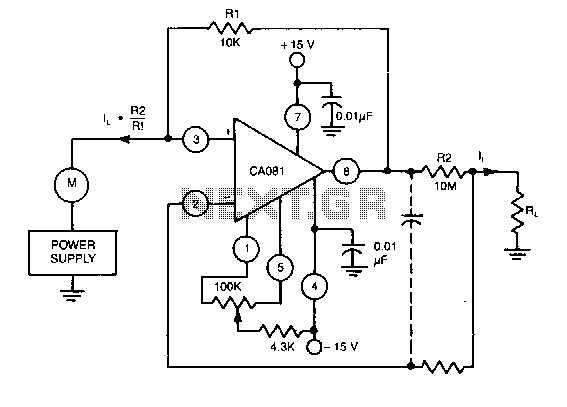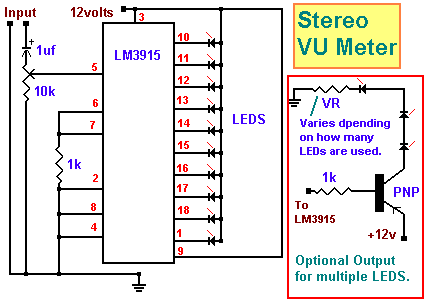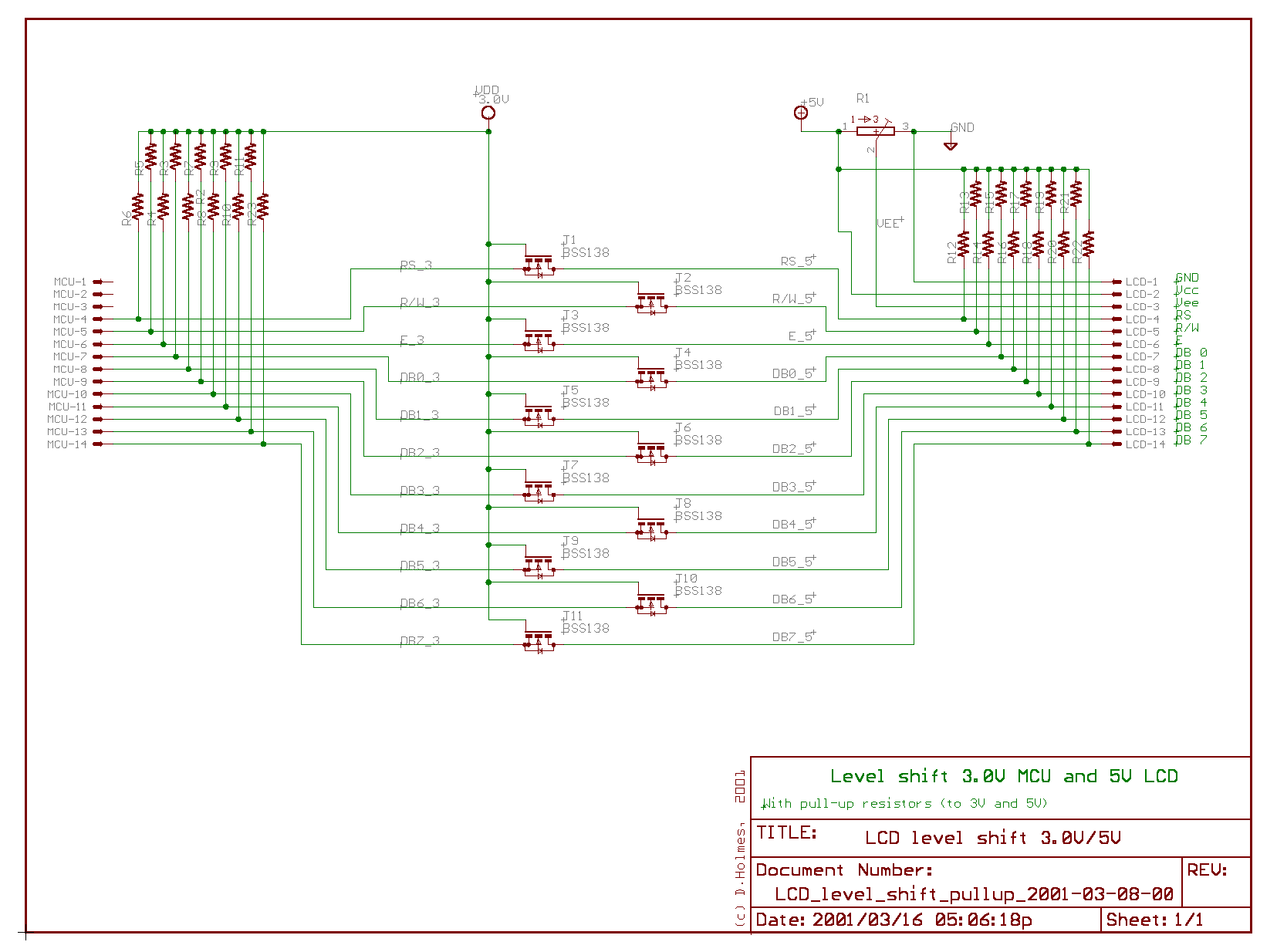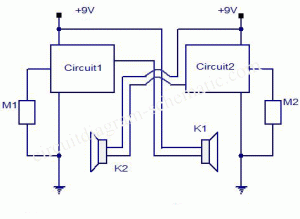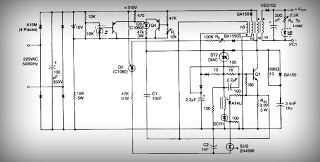
current simple h-bridge polarity reversal
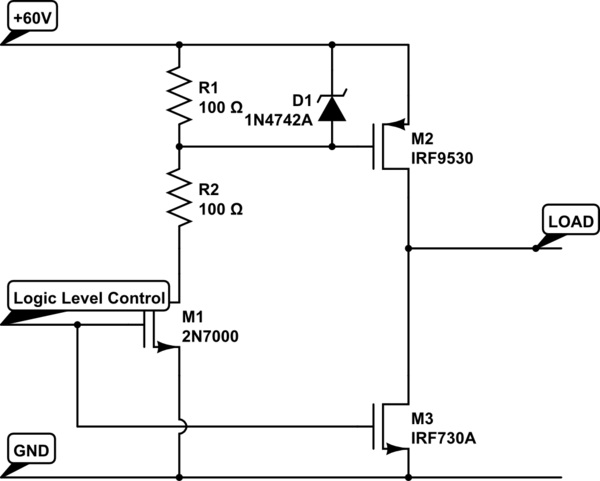
Construct an H-bridge specifically for reversing current, as speed control is managed separately. Is it feasible to connect two N-channel MOSFETs and two P-channel MOSFETs to an IO pin from the microcontroller (with appropriate resistors), or is the process more complex than that?
An H-bridge is a circuit configuration that allows for the control of the direction of current flow through a load, typically a motor. In this application, the goal is to reverse the current for a motor while managing speed control independently. The proposed design involves using two N-channel MOSFETs and two P-channel MOSFETs, which is a common method for constructing an H-bridge.
The basic operation of the H-bridge requires the following connections: the two N-channel MOSFETs should be connected in series with the load, while the two P-channel MOSFETs should be connected in parallel with the load. The source of the P-channel MOSFETs connects to the positive supply voltage, while the drains connect to the load, which in turn connects to the drains of the N-channel MOSFETs that are grounded.
To control the H-bridge, the gate terminals of the MOSFETs must be driven appropriately. The N-channel MOSFETs require a high signal at their gate to turn on, while the P-channel MOSFETs require a low signal. This typically involves using the microcontroller's IO pins to send PWM signals or digital high/low signals to the gates of the MOSFETs. Resistors are necessary to limit the gate current and to pull down the gate voltage when the microcontroller pin is not actively driving the gate.
The control strategy for the H-bridge should ensure that only one pair of MOSFETs is turned on at a time to prevent a short circuit condition across the power supply. This can be achieved by implementing a control logic that alternates the gate signals based on the desired direction of current flow. Additionally, flyback diodes may be required across the MOSFETs to protect against voltage spikes generated by inductive loads, ensuring the longevity and reliability of the circuit.
In summary, while the proposed approach of using two N-channel and two P-channel MOSFETs is valid for constructing an H-bridge, careful consideration must be given to the control logic and additional components to ensure proper operation and protection of the circuit.Build an h-bridge just to reverse the current, I am controlling speed elsewhere. Can I simply wire up 2 N-Channel MOSFETs and 2 P-Channel MOSFETs into a IO pin from the MC (with resistors of course) or is it more complicated than that. 🔗 External reference
An H-bridge is a circuit configuration that allows for the control of the direction of current flow through a load, typically a motor. In this application, the goal is to reverse the current for a motor while managing speed control independently. The proposed design involves using two N-channel MOSFETs and two P-channel MOSFETs, which is a common method for constructing an H-bridge.
The basic operation of the H-bridge requires the following connections: the two N-channel MOSFETs should be connected in series with the load, while the two P-channel MOSFETs should be connected in parallel with the load. The source of the P-channel MOSFETs connects to the positive supply voltage, while the drains connect to the load, which in turn connects to the drains of the N-channel MOSFETs that are grounded.
To control the H-bridge, the gate terminals of the MOSFETs must be driven appropriately. The N-channel MOSFETs require a high signal at their gate to turn on, while the P-channel MOSFETs require a low signal. This typically involves using the microcontroller's IO pins to send PWM signals or digital high/low signals to the gates of the MOSFETs. Resistors are necessary to limit the gate current and to pull down the gate voltage when the microcontroller pin is not actively driving the gate.
The control strategy for the H-bridge should ensure that only one pair of MOSFETs is turned on at a time to prevent a short circuit condition across the power supply. This can be achieved by implementing a control logic that alternates the gate signals based on the desired direction of current flow. Additionally, flyback diodes may be required across the MOSFETs to protect against voltage spikes generated by inductive loads, ensuring the longevity and reliability of the circuit.
In summary, while the proposed approach of using two N-channel and two P-channel MOSFETs is valid for constructing an H-bridge, careful consideration must be given to the control logic and additional components to ensure proper operation and protection of the circuit.Build an h-bridge just to reverse the current, I am controlling speed elsewhere. Can I simply wire up 2 N-Channel MOSFETs and 2 P-Channel MOSFETs into a IO pin from the MC (with resistors of course) or is it more complicated than that. 🔗 External reference
